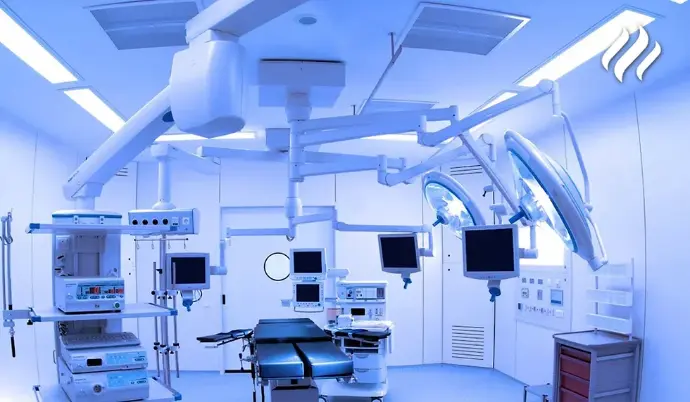Healthcare: Cases studies
Medical device manufacturer :
In the medical device industry, technological innovation alone does not guarantee commercial success. Our customer, a medium-sized manufacturer specializing in diagnostic equipment, learned this the hard way. Despite a high-potential product portfolio, the company was facing stagnating sales in highly competitive markets.
The go-to-market strategy, initially designed to address a limited number of segments, had become ill-adapted to the changing needs of healthcare providers and intensifying international competition. Without a precise understanding of customer expectations and effective monitoring of business opportunities, the company risked losing its competitive position.

Difficult adoption and fragmented efforts
In analyzing the situation, it became clear that several factors were holding back sales development:
- Lack of market segmentation: Marketing and sales efforts were targeting too broad an audience, diluting the impact of campaigns.
- Lack of centralized prospect management: Customer data was scattered across various systems, making tracking complex
- Internal resistance to change: Sales teams were reluctant to adopt new technological solutions.
These challenges made coordination between the marketing, sales and technical departments difficult. The result: missed opportunities and a prolonged sales cycle.
Customer and data-centric transformation
Framing Impacts supported the company in a complete overhaul of its go-to-market strategy in three key stages:
Market segmentation and customer journey mapping: We analyzed the needs of healthcare providers and identified priority segments. Each segment was studied in depth, highlighting specific expectations and decision-making criteria.
Creation of targeted value propositions: Working with in-house teams, we developed marketing messages tailored to each segment, positioning products as tailor-made solutions.
Deployment of a customized CRM: We set up a customized customer relationship management system, centralizing sales data, automating prospect follow-up and improving performance visibility.
A revitalized performance
The results were significant and rapid: 30% increase in sales in six months, thanks to a more targeted and better organized sales approach and lead conversion time reduced by 20%, thanks to optimized customer follow-up and better internal coordination.
“Framing Impacts helped us align our sales strategy with market needs. Their recommendations have been truly transformative.” - VP of Sales.
Evolve corporate culture and align strategy and collaboration
One of the biggest challenges was to overcome the sales teams' initial resistance to adopting the new CRM. Thanks to ongoing communication, personalized training and regular support, this cultural barrier was gradually overcome.
This project demonstrated that alignment between sales, marketing and technology teams is essential for long-term success. A data-driven strategy, supported by modern tools and cross-functional collaboration, can transform a business, even in a market as competitive as medical devices.
Healthcare SaaS Provider
In the highly competitive healthcare sector, an innovative start-up offered a SaaS solution designed to improve patient management. Although the platform offered advanced functionalities, user adoption was low. Despite its promise, the product failed to convince healthcare professionals and patients alike. The perceived lack of security and the complexity of the user interface were major obstacles to adoption.
The company was faced with a dual problem: users' distrust of the platform and a lack of visibility due to a limited marketing budget. This situation threatened not only the company's growth, but also its ability to position itself in the market against its more established competitors.

Overcoming obstacles to win user confidence
Despite a quality product, the startup was faced with low user adoption and disappointing retention rates. Patients and healthcare professionals were reluctant to engage with the platform, fearing its security and complexity. The lack of trust and visibility was exacerbated by a limited marketing budget, which limited the company's ability to effectively communicate the benefits of the platform and convince users of its advantages.
A revitalized performance
Great stories have a personality. Consider telling a great story that provides personality. Writing a story with personality for potential clients will assist with making a relationship connection. This shows up in small quirks like word choices or phrases. Write from your point of view, not from someone else's experience.
Great stories are for everyone even when only written for just one person. If you try to write with a wide, general audience in mind, your story will sound fake and lack emotion. No one will be interested. Write for one person. If it’s genuine for the one, it’s genuine for the rest.
A strategic and educational overhaul
to win the trust of users
Framing Impacts was asked to address these complex challenges and support the startup in its transformation. After an in-depth analysis of the situation, we proposed a branding strategy designed to reinforce the perception of the platform as a secure, easy-to-use and transparent solution.
Strategic rebranding: We redesigned the brand to emphasize data security and ease of use. Communication was geared towards transparency, a key factor in the healthcare sector. Every aspect of the platform has been revisited to reassure users of the reliability and protection of their information.
Introduction of interactive demos and onboarding sessions: To facilitate adoption, we introduced interactive demos and personalized onboarding sessions. These initiatives enabled users to understand the platform's functionalities in real time, while at the same time providing them with the personalized support they needed to build trust. We created an educational and immersive experience that facilitated the integration and engagement of new users.
Significant growth in sales and loyalty
The results were remarkable. In the space of three months, the combined branding and engagement efforts achieved impressive results:
40% increase in user adoption, thanks to a better perception of the platform and a simpler, more reassuring onboarding process.
25% improvement in retention rates, proving that not only were more users adopting the solution, they were also more inclined to remain committed to the platform in the long term.
These results enabled the startup to emerge from a period of stagnation and embark on a genuine growth phase.
The startup's CEO expressed his satisfaction with the results, stating:
“We've gone from struggling to thriving, thanks to Framing Impacts' branding and engagement strategies.” - CEO
This testimonial reflects the direct impact of our intervention on the transformation of their business, both in terms of the perception of the platform and the tangible growth of their user base.
Growth despite a limited marketing budget
The biggest challenge we faced was the lack of significant financial resources for marketing. We had to optimize every euro spent to maximize the impact of our actions. Thanks to a creative and strategic approach, we used effective and targeted tools to achieve measurable results without requiring a considerable marketing budget.
This collaboration demonstrated that when it comes to SaaS, particularly in the healthcare sector, user trust is paramount. It's essential to build this trust by being transparent, listening to users' needs and offering a simple, secure experience. Ongoing user education and training are powerful levers for transforming skeptics into loyal, committed users.
Experience has also shown that even with limited resources, significant results can be achieved by focusing on the most effective levers, such as clear communication and personalized support.
This business case illustrates how Framing Impacts helps its customers transform complex challenges into growth opportunities. Thanks to a clear branding strategy and an approach focused on the user experience, we enabled a healthcare start-up to reinvent itself, build trust and achieve tangible results.
Hospital network
A regional hospital network, managing several healthcare facilities, was facing serious operational inefficiencies. The hospital group was faced with excessively long patient waiting times and poor resource management, both of which had a negative impact on patient experience and facility profitability. Although the care teams were competent, managing patient flows and resources remained a major challenge.
Patients often found themselves in long queues, while resources such as beds and staff were poorly allocated. This was leading to high operating costs and growing patient dissatisfaction. The hospital group was looking for a solution to improve efficiency while optimizing costs and reducing waiting times.

Inefficient processes and a legacy system difficult
to modernize
The integration of new technologies and optimized solutions came up against obsolete legacy systems. The hospital group was facing resistance to change from certain teams, and the integration of predictive analytics tools seemed complex with existing technologies. Resource management inefficiencies, combined with poor staff and equipment allocation, made rapid and visible improvement difficult.
Despite the group's efforts to modernize its operations, the lack of visibility and coordination in resource allocation hindered optimal patient flow management.
Process optimization and predictive analysis
to reduce inefficiencies
Framing Impacts was called in to solve these efficiency problems through an approach combining process reengineering and the integration of predictive analytics.
Process optimization: We designed and implemented optimized workflows, enabling internal processes to be simplified and accelerated. We put in place protocols and tools to smooth the patient journey, reduce bottlenecks in care, and ensure better time management for each stage of treatment.
Implementation of predictive analytics: We introduced predictive analytics tools for optimal resource allocation. These tools enabled us to anticipate bed, staff and equipment requirements, ensuring proactive rather than reactive management. Thanks to predictive models, teams were able to anticipate peaks in activity and adjust resources accordingly, thus avoiding situations of under-utilization or overload.
Significant gains in efficiency and satisfaction
The results were visible very quickly, with significant improvements in hospital processes: a 35% reduction in patient waiting times, which reduced patient frustration and improved the efficiency of the care pathway; and a 15% reduction in operating costs, thanks to more efficient resource management and the elimination of waste linked to misallocation of resources.
These results have had a direct impact on the patient experience, enabling the hospital group to reduce costs while improving the quality of care.
The hospital group's COO emphasized the impact of our intervention, declaring:
“Framing Impacts has revolutionized our operations and improved patient satisfaction.” COO
This testimonial illustrates the radical change brought about by our approach, which enabled the hospital network to rethink and streamline its processes while optimizing available resources.
This project highlighted a key lesson: the combination of data analysis and process reengineering can generate significant efficiency gains. By using real-time data and predictive models, organizations can anticipate needs and avoid inefficiencies that hamper performance. Experience has also shown that the adoption of new technologies can be successful even in complex environments, provided it is accompanied by effective change management.
This business case shows how Framing Impacts enabled a hospital group to overcome complex operational challenges by re-engineering its processes and integrating predictive analytics to improve resource management. By optimizing internal processes and anticipating needs using data, we helped the group achieve tangible results, both in terms of cost reduction and improved patient experience.